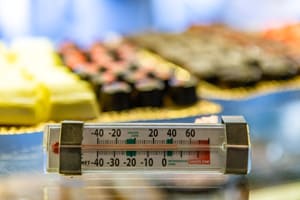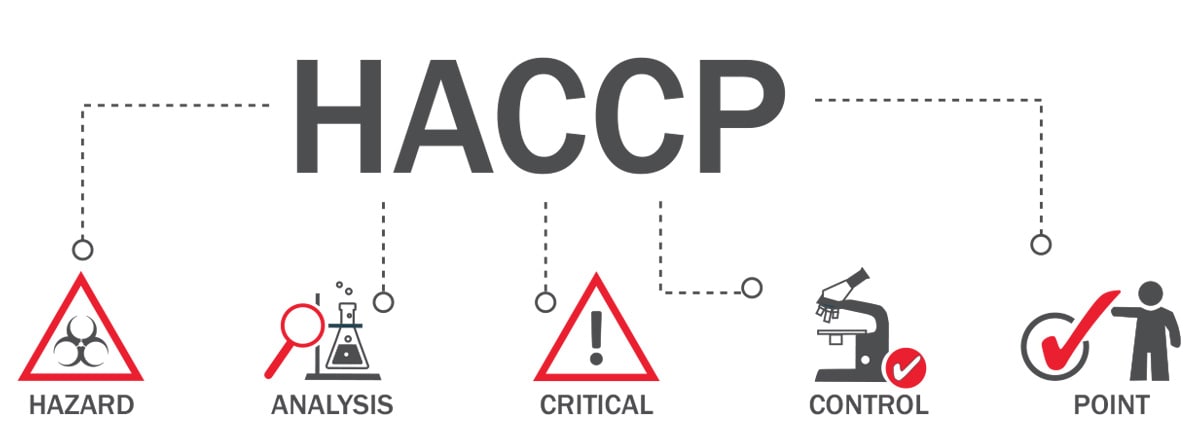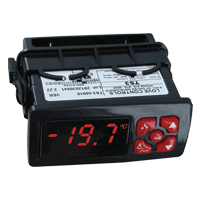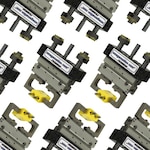 Unless it's recently stopped running (or run away), you probably haven't paid much attention to your refrigerator lately. Despite enjoying status among the largest and most frequently used appliances in your home, the refrigerator is a bit of an unsung hero, quietly humming away in your kitchen, keeping lettuce crisp and ice cream velvety smooth. But refrigeration is about so much more than fresh greens and tasty frozen treats; the humble fridge is also the first line of defense against foodborne illness.
Unless it's recently stopped running (or run away), you probably haven't paid much attention to your refrigerator lately. Despite enjoying status among the largest and most frequently used appliances in your home, the refrigerator is a bit of an unsung hero, quietly humming away in your kitchen, keeping lettuce crisp and ice cream velvety smooth. But refrigeration is about so much more than fresh greens and tasty frozen treats; the humble fridge is also the first line of defense against foodborne illness.
Historical trivia: The first practical, ice-cooled refrigerator rail car was invented in Chicago for Swift & Co. in 1878, revolutionizing the meat packing industry and changing the way we eat forever. (Wikipedia - Gustavus Franklin Swift)
According to the CDC, there are 31 pathogens known to cause foodborne illness. In the United States, these pathogens, including norovirus, salmonella, and even Staphylococcus aureus (Staph), are responsible for an estimated 9.4 million cases annually. Many of these cases go beyond typical food poisoning symptoms, resulting in 56,000 hospitalizations and 1,300 deaths.
The Danger Zone
 Whether cooked or raw, when improperly stored, food offers bacteria an ideal environment to multiply. One of the best ways to keep food free of harmful bacteria is to make sure that perishable items spend as little time in the Danger Zone as possible.
Whether cooked or raw, when improperly stored, food offers bacteria an ideal environment to multiply. One of the best ways to keep food free of harmful bacteria is to make sure that perishable items spend as little time in the Danger Zone as possible.
While for some the Danger Zone might inspire images of fighter planes and aviator sunglasses, for those with a mind for food safety, the Danger Zone is the temperature range in which bacteria multiply rapidly: 40-140 degrees Fahrenheit (4°C - 60°C). The longer food spends in that range, the more hospitable it becomes to bacteria. Simply put, if it's not in a pan or on a plate in front of you, it should probably be refrigerated. (USDA) Did you know? While food is in the Danger Zone, bacteria levels can double in less than 20 minutes. Food safety & alphabet soup
Food safety is a scientific discipline focused on the prevention of foodborne illness, providing guidelines on the proper handling, preparation, and storage of food. To make sure food manufacturers adhere to established food safety standards, there are a number of food safety organizations and regulations in place: USDA, FDA, FSIS, etc.
For example, Hazard Analysis and Critical Control Point (HACCP) is a system that food processing facilities can implement to ensure the safe handling of food throughout the supply chain, from the moment it's harvested until it's in your shopping cart. One key requirement of HACCP compliance is building a storage system capable of monitoring, controlling, and recording the temperature at which food is kept, ensuring that perishable items are kept out of the Danger Zone.

Fun fact: HACCP is the result of a collaborative effort between Pillsbury, the U.S. Army Natick Laboratories, and NASA to develop food free of contamination for space travel. (NASA Spinoff)
How DwyerOmega helps keep you healthy Digital Temperature Switch, Series TS3
Digital Temperature Switch, Series TS3 To be sure that HACCP protocols are met, industrial refrigeration facilities employ a variety of sensors, transmitters, and switches that measure, track, and control the temperature in warehouse-size spaces. The DwyerOmega® Series TS3 digital temperature switch is an on/off control device that works with a variety of sensor probes, making it perfectly suited for not only meeting HACCP industrial refrigeration requirements, but an assortment of commercial cooking and food-handling applications. The built-in clock allows for tracking temperature alarms raised by temperature swings or losses of power, making it perfectly suited for HACCP-compliant systems.
For more information on how the the DwyerOmega® Series TS3 digital temperature switch can help your organization meet HACCP standards, or any other DwyerOmega products, the DwyerOmega Applications Engineers are available to assist by phone at (219) 879-8868 x6402, or by email at tech@DwyerOmega.com.

